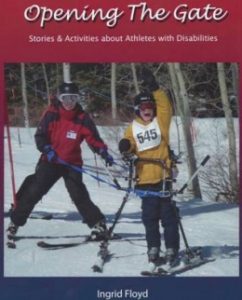Teaching the Blind
By James W. “Jay” Wood
USGTF Level III Member, Newark, Ohio
The game we call golf is, as we know, challenging and very humbling. But, what does it become if we take away the ability to see the course layout, the greens, and even the golf ball? This is blind golf.
What is blind golf like? This is not a lesson on how to teach the visually-impaired, but this article contains some insights and experiences which have helped a blind golfer become competitive on the USBGA (United States Blind Golfers Association) tour.
In 2004 I was offered the challenge of coaching a blind golfer. The gentleman is totally blind with no light perception. The time spent with him has been the most worthwhile and best experiences to date in my golfing and teaching career.
The most difficult part of blind golf is, absolutely and unequivocally, balance. The sighted golfer balances himself based upon the horizon surrounding him. The blind golfer with no light perception places his balancing hopes on the feeling in his feet and the sensation of vertically of the body. Any type of jerky motion during the golf swing drastically minimizes the probability of maintaining balance throughout the duration of the swing.
Comments and references to swinging smooth have worked tremendously with my golfer’s balance. Of course, the thinking process varies from person to person. In addition, the blind golfer has a tendency to attempt to keep balance by not moving their feet. Weight transfer and finish are still of importance. One suggestion we have used is to imagine shaking hands with a person directly on his left as he finishes the swing. This has improved his body rotation throughout the swing, with a better balanced finish with weight transfer to the left foot.
Of course, balance is easier on level ground. We have a very good par-3 hole at our home course that has mounds surrounding the green. Here, we are able to practice every conceivable lie with various wedge shots to the green. The practice sessions combine maintaining balance and ball position with different lies, slopes and short game mechanics.
Good scoring is dependent on a solid short game, and we work towards this goal based on the use of the sand wedge. Lob wedge or gap wedge shot lengths are based on adjusted sand wedge distances. We also us a five-yard spread as distance references, 5 to 10, 10 to 15, etc.
The blind golfer usually feels apprehension as he swings, hoping upon hope that he will make contact with the ball. Consequently, there is a tendency to rush the swing. We have made progress in this area by shortening his backswing, which helps eliminate any change in his spine angle. Use of the well-known “weighted club” has been an asset towards smoothness and rhythm. As with sighted golfers, we need to let the swing happen, and not make it happen.
Since we are the eyes of the blind golfer, we must be aware of his alignment and clubface position. My golfer lays his club across his thighs on setup, which gives me a good perception of initial alignment. We then fine tune the stance, based on foot position. If too much time is spent on aligning, it will become a negative and we will back off and start anew. The process must be simple and concise.
For the visually-impaired golfer, putting is all feel. The one advantage the blind golfer has is that, to him, all putts are straight putts. Any breaks and alignment are the responsibility of the coach or guide. We must insure that the golfer’s putting stroke is straight back and straight through. Various exercises are used to hone mechanics. On most putts, my golfer likes to step off the distance from the hole to the ball. He is able to feel contour changes in the green through his feet. This is a confidence builder and helps him to visualize the putt.
Using the push drill and right-hand-only putting practice, my golfer has become a very good putter. After I select the line for his putt, I set his clubface where I want it and he then steps to the club while I hold it to keep it from moving. We have found that this works best in our situation.
Almost any drill used in teaching a sighted golfer can be used with the visually impaired. However, manual positioning of club or body must be incorporated by the teacher. Verbal descriptions must be easily understood by the golfer in hopes that they can feel the process or point we are addressing. There are two very informative articles on the blind golf website, www.blindgolf.com, “Swing Without Seeing” and “Basic Blind Golf Techniques.” Both articles were written by Bob Andrews, himself a blind golfer.
Think of your sensations as you are playing golf, and then try to imagine what it would be like without your sight. To a blind golfer, the input and feedback from the coach to the golfer and the golfer to the coach is most important. You are a team. If you are ever offered the opportunity to coach the handicapped or know someone who is, get involved. The rewards are more than one could ask for.


 click here to view on Amazon
click here to view on Amazon